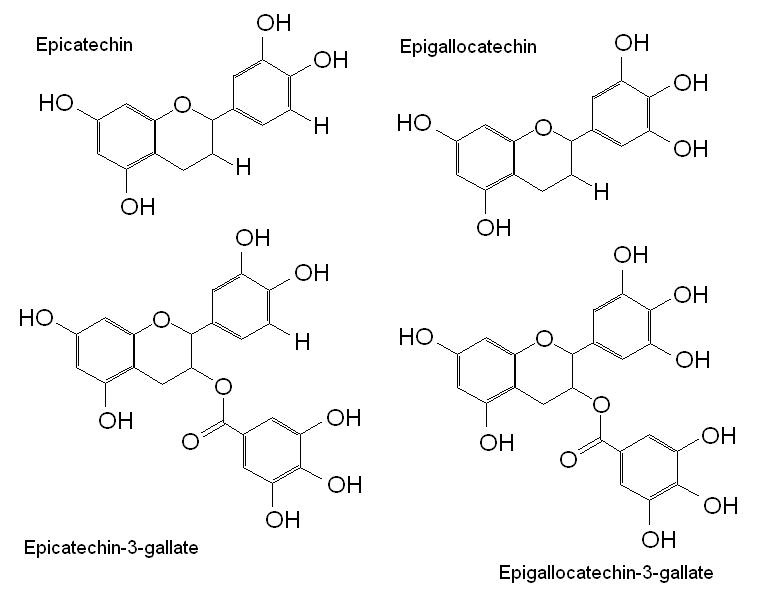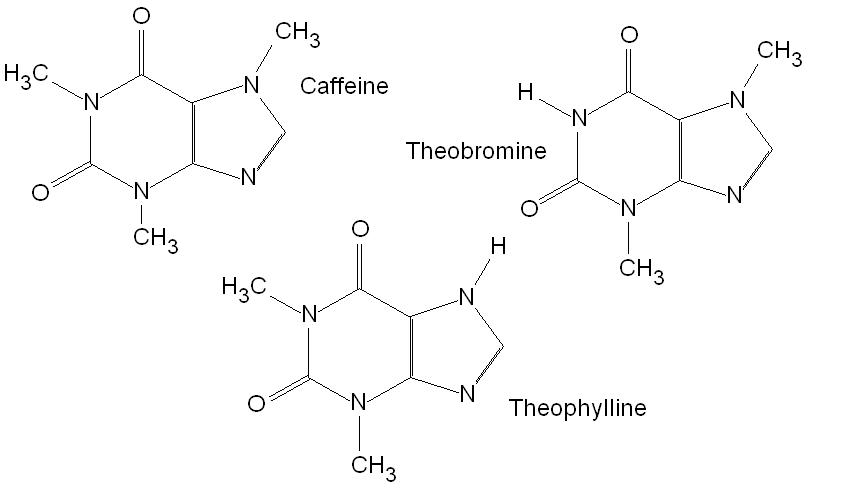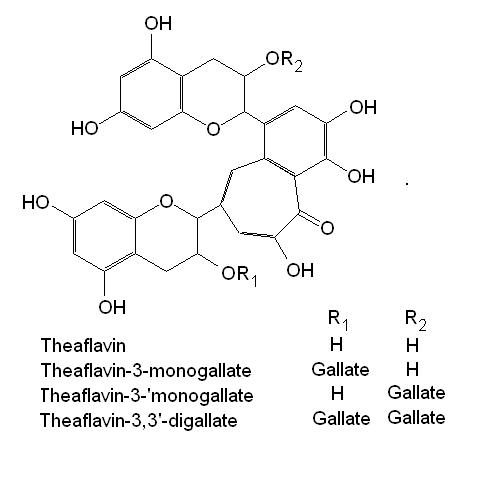Tea is of interest to nutritional scientists because research is starting to highlight a number of health benefits associated with drinking it and because tea is so widely consumed. Tea has been know by historians and archaeologists to have been consumed for over four thousands of years dating back to the first known civilisations. Epidemiological studies suggest that consumption of tea may reduce the incidence of cardiovascular disease and cancer. Tea is a decoction made by infusing the leaves of the plant Camellia sinensis with boiling water. This process allows a number of interesting chemical constituents present in the leaves to diffuse into the water, which are then drunk. Typically, a cup of tea prepared by infusing 1 g of leaf into 100 mL of water for 3 minutes, produces a drink with 250 to 300 mg of tea solids.
Green tea is prepared by drying the leaves with a mild heat, allowing the leaves to maintain their original chemical composition. Green tea contains a number of flavonoids that belong to the subcategory of flavon-3-ols. Flavan-3-ols possess polyphenolic ring structures that are thought to confer strong antioxidant activity on the compounds, which may account for some of their health benefits. These flavonoids are also thought to regulate gene expression. The flavan-3-ols present in green tea are epigallocatechin gallate (EGCG), epicatechin (EC), epigallocatechin (EGC), and epicatechin gallate (ECG) (figure 1). A typical cup of green tea contains roughly 240 to 320 mg of flavon-3-ols with roughly 50 % of this amount being made up of EGCG. Green tea is drunk mainly in the countries of the East, such as Japan and China and accounts for 20 % of worldwide consumption.
 Figure 1. Green tea catechins (flavon-3-ols).
Figure 1. Green tea catechins (flavon-3-ols).
Black tea is the most popular tea in Western nations, and accounts for 78 % of total worldwide consumption. It is produced by a lengthy fermentation process following crushing the leaves. During this process, polyphenol oxidase metabolises many of the flanvon-3-ols into theaflavins and thearubigins. The theaflavins in black tea include theaflavin, theaflavin-3-gallate, theaflavin-3’-gallate and theaflavin-3,3’-digallate (figure 2). These are oligomeric polyphenolic compounds made up from the monomeric flavan-3-ols present before fermentation. Theaflavins may account for 2 to 6 % of the dry weight of brewed black tea. Thearubigens are the major fraction of black tea polyphenols, and they account for > 20 % of the solid weight of black tea, but are poorly characterised chemically. Oolong tea is only partially fermented, and so retains more of the original flavon-3-ols. It is consumed mainly in Southern China accounting for 2 % of total consumption worldwide.
Figure 2. The chemical structure of the theaflavins in black tea.
Tea also contains a number of methylxanthine compounds, including caffeine, theophylline and theobromine (figure 3). A typical cup of tea may contain around 3 to 6 % of the dry weight as caffeine. Methylxanthines interact with the adenosine receptors and have a number of effects in the body (figure 4). Caffeine may be able to increase fat oxidation in muscle tissue during exercise, and some studies suggest that it can improve athletic performance. Caffeine may also stimulate theromgenesis in humans and this increase in fat burning may account for some of the weight loss effects seen with green tea. This is supported by evidence that caffeine consumption increases basal metabolic rate in healthy subjects, presumably by increasing fat oxidation and lipid turnover. Increase in caffeine consumption has been shown to decrease long-term weight gain, although the effects are moderate1.
 Figure 3. The chemical structure of the methylxanthines found in tea.
Figure 3. The chemical structure of the methylxanthines found in tea.
Figure 4. The relative pharmacological actions of the methylxanthines in tea. 1 = most active
RdB


